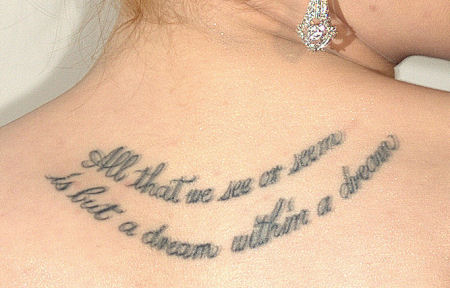Strangely, the first paper to discuss sexsomnia appeared as late as 1996 in Sleep Research where it was still called “sexual behaviour in sleep” (SBS). The first attempt to define this seemingly new sleep disorder was in the June 2003 issue of The Canadian Journal of Psychiatry. In this research, sexsomnia is classed as one of many parasomnias, which also include things such as sleep-walking and talking. A parasomnia in general is a dissociated sleep state with a partial arousal due to a transition between the sleeping and waking states. But whereas sexual dreams and sleep orgasms have been well documented, why has sexsomnia only recently emerged from under the covers?
 One thing that sets this disorder apart from all the other parasomnias is that it most often involves a second person. If that person is your partner then they may not even be aware that you're actually still asleep and be a willing participant in the act. One commenter on a New Scientist article admitted that this is exactly what happens, and it is only when he sometimes awakens from his sleep state that he is shocked to find what he is in the middle of doing. His concern is whether in the future he may do something harmful to his partner yet be completely oblivious to his actions.
One thing that sets this disorder apart from all the other parasomnias is that it most often involves a second person. If that person is your partner then they may not even be aware that you're actually still asleep and be a willing participant in the act. One commenter on a New Scientist article admitted that this is exactly what happens, and it is only when he sometimes awakens from his sleep state that he is shocked to find what he is in the middle of doing. His concern is whether in the future he may do something harmful to his partner yet be completely oblivious to his actions.Indeed, although the neurophysiology of such behaviour remains unknown, it has not taken long for it to be accepted as a defence against some alleged rape cases. The first such case was in 2005, when a Toronto court acquitted a man of sexual assault because he claimed to suffer from sexsomnia. The court classed his state of mind as “non-insane automatism”; he could not be found guilty as he had no conscious awareness of his actions. The Ontario Court of Appeal later upheld the original decision but expect the man to undergo a mental health review to decide on appropriate treatment – this last aspect is still to be decided. In legal terms, sexsomnia is thus being treated as a form of sleep-walking.
Although it is still not known why some people suffer from this condition, the above case also highlights some of the common triggers, which include previous sleep deprivation and an excessive consumption of alcohol and other drugs. These, plus stress, are also well-known triggers for other parasomnias such as sleep-walking. However, such sleep disorders are considered common in children (an estimated 15% of the child population) and to decrease in adulthood (to about 6% of the population), and yet are thought normal in children but a psychopathology in adults. But perhaps such parasomnias do not suddenly disappear in adulthood but go largely unreported, sometimes becoming sexual.
 One case study in the CJP article was of a man diagnosed initially with sleep-driving; his sexsomnia came out purely by accident. “This emerged at a “routine” follow-up at which the first author had commented to Mr W that his “sleep-driving” was being rivalled as the most unusual of parasomnias. A description of sexsomnia was given, and Mr W responded by saying “Oh, but I do that.” The disingenuous response by the interviewer “but you never told me” was followed by Mr W saying “but you never asked.” Mr W’s 2 current girlfriends independently confirmed that he frequently engages in sexual behaviour while asleep. One describes him as a “different person” during these activities—apparently, he is a more amorous and gentle lover and more oriented toward satisfying his partner when he is asleep.” Now, you can understand perfectly why this woman was not going to complain about a mere sleep disorder.
One case study in the CJP article was of a man diagnosed initially with sleep-driving; his sexsomnia came out purely by accident. “This emerged at a “routine” follow-up at which the first author had commented to Mr W that his “sleep-driving” was being rivalled as the most unusual of parasomnias. A description of sexsomnia was given, and Mr W responded by saying “Oh, but I do that.” The disingenuous response by the interviewer “but you never told me” was followed by Mr W saying “but you never asked.” Mr W’s 2 current girlfriends independently confirmed that he frequently engages in sexual behaviour while asleep. One describes him as a “different person” during these activities—apparently, he is a more amorous and gentle lover and more oriented toward satisfying his partner when he is asleep.” Now, you can understand perfectly why this woman was not going to complain about a mere sleep disorder.But isn't a plea of sexsomnia just too easy to fake? Not under a polysomnograph (PSG), which measures different brainwave patterns during sleep. In all the researched cases slow-wave sleep (SWS) is interrupted by inexplicable flashes of arousal from alpha-waves. Some researchers think these may be mild epileptic discharges. Such intrusions into deep sleep seem necessary but not in themselves sufficient to trigger an episode of sexsomnia. The subjects also generally had experienced multiple types of parasomnia throughout their lives, so that the sexual angle was just one dimension of an overall problem in their sleep pattern.
The New Scientist article mentioned above was about a woman who would have sex with strangers while sleep-walking, thereby combining somnambulism with sexsomnia. The woman was happily married so this was a shock both to her and her husband. Repressed sexual fantasies tend to come out in dreams rather than sexsomnia – there is no satisfaction in being unconscious of acting out such fantasies. Sexsomnia is classed as a non-REM (NREM) parasomnia and hence outside of the classic dream state. But how accurate is our current knowledge of what goes on during sleep anyway?
Our common picture of sleep being divided into a dreaming REM phase and a deep-sleep NREM phase is starting to show serious cracks. The phase changes between conscious wakefulness and sleep can be experienced; they are now called hypnagogia and hypnopompia. Other parasomnias puncture the NREM phase and yet are not dreams. There seems to be a prevalence to define anything out of the ordinary as a disorder when in fact it could just be uncommon because unspoken of out of ignorance. A cursory look at Sleep Yoga and Dream Yoga from the Dzogchen school shows accurate descriptions of these phase changes, how to generate them and how to be aware of what the experiences are. People are often frightened by such experiences, such as sleep paralysis, because nobody has taught them that the experience is normal, in the sense that it happens every night, yet unusual, in that we usual slip through that phase change without noticing. The idea that we exist in one of two states - conscious or sleeping - may need to be replaced with a range of intermediate states.
 The CJP article ends with some interesting thoughts. Looking at the whole range of parasomnias, it seems that humans are perfectly able to walk, talk, eat, drive a car, have sex and even kill, all completely unconsciously! This is a life with our consciousness wide shut. Where has our awareness gone? How can we do so many things, and do them perfectly adequately, without a consciousness being conscious?
The CJP article ends with some interesting thoughts. Looking at the whole range of parasomnias, it seems that humans are perfectly able to walk, talk, eat, drive a car, have sex and even kill, all completely unconsciously! This is a life with our consciousness wide shut. Where has our awareness gone? How can we do so many things, and do them perfectly adequately, without a consciousness being conscious? “First, one must consider whether it is possible to perform complex acts while asleep. To answer this, we should view the brain as a network of different groups of neurons, which may be variably active. Many subcortical and cortical neurons are indeed inactive during sleep. However, the reticular formation and hippocampal structures, for example, will react even during sleep to any external stimuli, initiating movement to preserve the integrity of the body. On the other hand, cortical structures are normally very active during REM sleep as part of the dream mentation. Also, a good measure of primary and secondary (higher-order) functioning is preserved during sleep, which may give an impression that, during a parasomnic episode, something exists that could be viewed as purposeful act. However, a person experiencing a parasomnic event does not have a fully “awakened” brain—some of the cortical structures, such as those responsible for memorizing and learning or those that help us to distinguish events from objective reality and intrinsic experiences, remain inactive, making some of the higher-order functions, including the consciousness, impaired.”
In the Sleep Yoga I mentioned, one is trained to remain aware during sleep. That may sound impossible to those trained to think of sleep as a dark oblivion but these glimpses into parasomnias show us that awareness may be possible in some of these states. Without memory there is no recall of past events. Is it still possible to be aware during an event and yet not have it stored in memory? Such questions have to be left for another time, and yet the researchers concede that there are important philosophical and neurophysiological questions. As in the case of the sleep-driving sexsomniac, sometimes the most important step is in asking the right question.

Courtesy of David Shankbone.
Coming back to sexsomnia, there are a few treatments available but, as the condition is very new, I would consult a real expert on this to get a complete picture of other possible parasomnias. You don't want to be taking Clonazepam for no good reason. But before any treatment must come a diagnosis and, much like sleep-walking and sleep-eating, the first indications of a problem may well come from another person, most probably your partner if you have one. The problem is that you may at some point end up sleeping with someone who is less understanding and the truth may come out in a public court rather than the privacy of a clinic. For those who think this sounds like fun, remember that it's done unconsciously and the person doesn't recall doing it – now where's the fun in that?




Comments